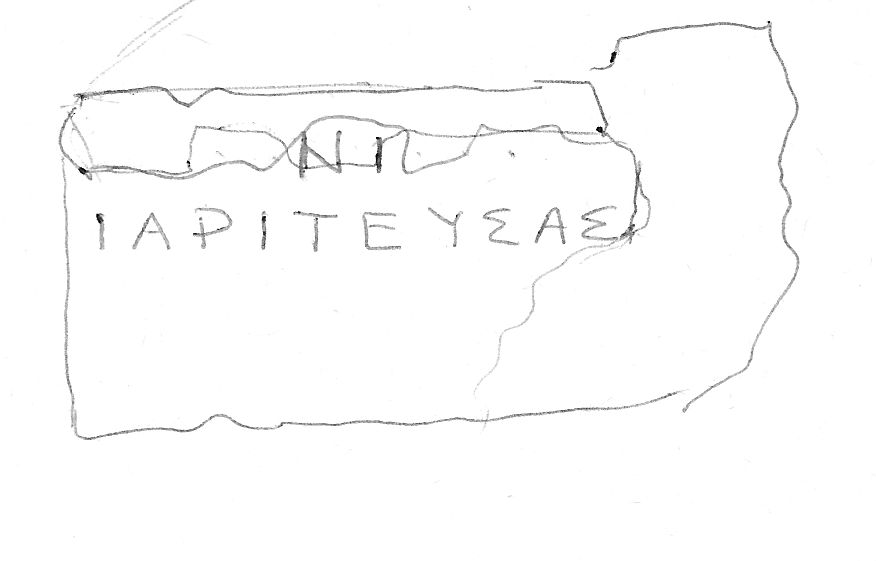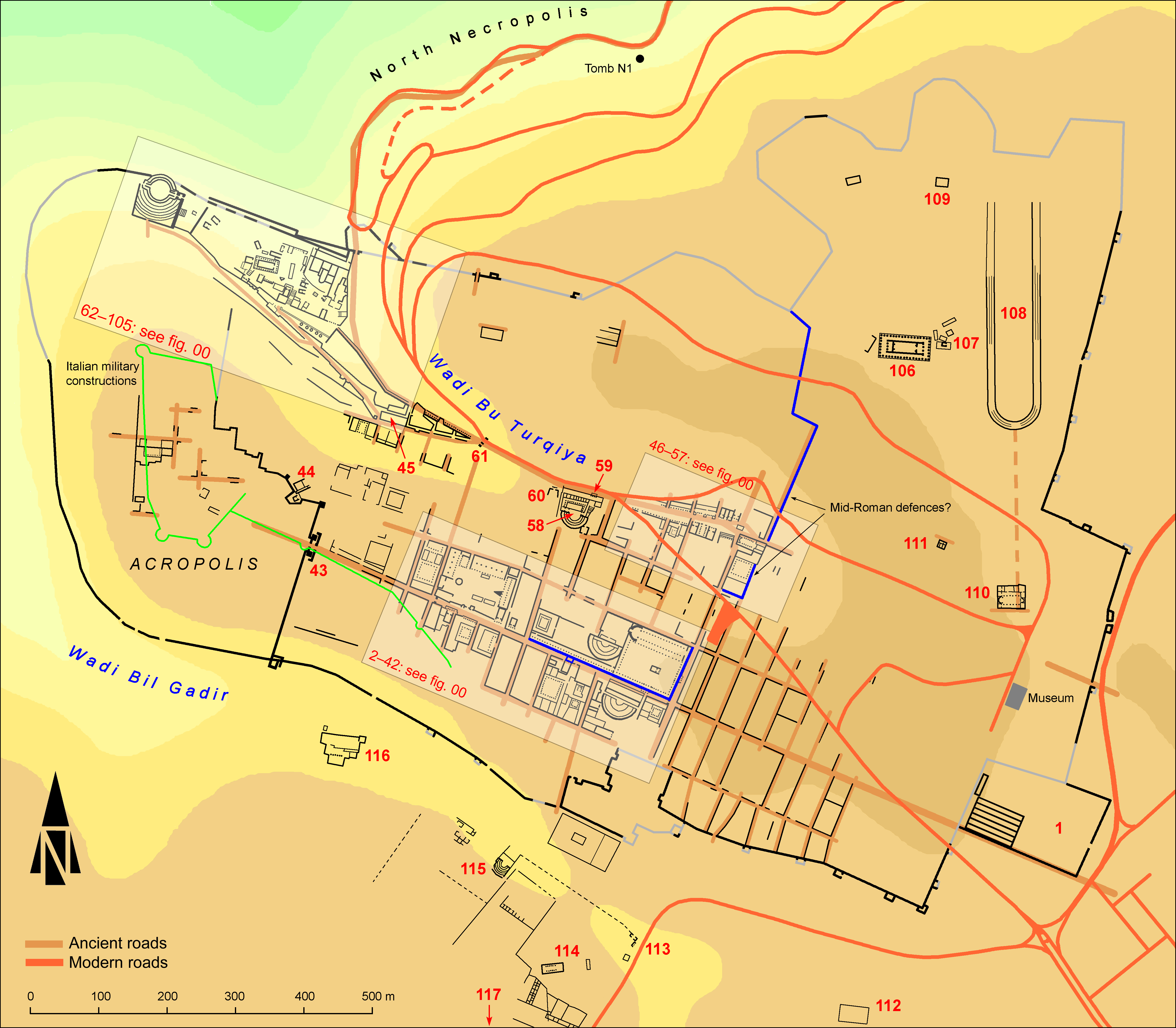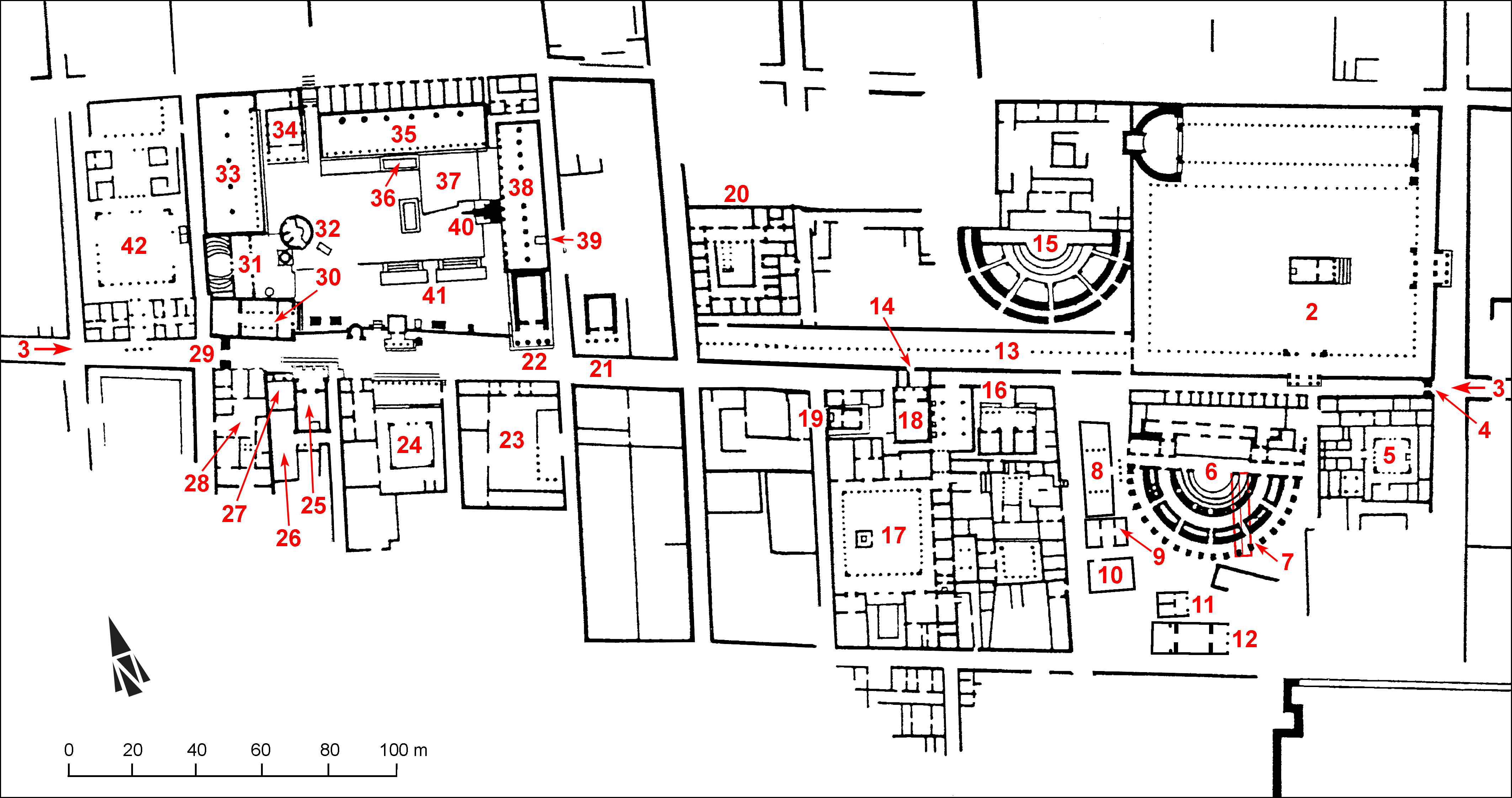EpiDoc XML:
IGCyr0983002
Trismegistos ID:
738500
Source description
Support: Plain rectangular base of tufa, broken off on all sides except at left and back, with two holes for attachment of a satue on top (w: 0.915 × h: 0.46 × d: 0.67).
Layout: Inscribed near upper edge of front face, which is much broken (w: 0.595 × h: 0.41).
Letters: 0.04; slight serifs, slanting sigma.
Date: Perhaps about 200 BC (Rosamilia) (lettering).
Findspot: Found by G. Oliverio in 1928 at Cyrene ➚: agora.
Place of origin: Findspot.
Last recorded location: Seen by C. Dobias-Lalou in 2004 at Cyrene ➚: agora, in front of the West Stoa. Studied by E. Rosamilia in 2010 at the same place.
Text constituted from: Transcription from stone (CDL).
Bibliography
Oliverio , XIV.9, whence SECir, 130 (no image); IGCyr 098300 ➚ Rosamilia 2023, p. 106 and footnotes 109, 110.
Text
Apparatus
1: [c. 3]ντ̣ω̣[---] Rosamilia 2023: [c. 4]ν Τ̣[c. 11] IGCyr; [...]ΝΤΩ[---] SECir
2: ἱαριτεύσας ἀ̣[νέθηκε]: ἱαριτεύσας [---] SECir
French translation
[---]ntô[--- fils d'Un tel a consacré] (scil. ce monument) après sa prêtrise.
English translation
[---]nto[--- son of So-and-so dedicated] (scil. this monument) after having been priest.
Italian translation
[---]nto[--- figlio d'Un taleha dedicato] (scil. questo monumento) dopo il suo sacerdozio.
Commentary
Pugliese Carratelli at SECir, published the inscription, which he did not find, from a drawing (not given) in Oliverio's papers. From the number of Oliverio's notebook we infer the date of 1928 for the find, which should have been fortuitous, as systematic excavations on the Agora began only in 1929. Although the findspot was not mentioned in SECir, it is obvious that the stone was not moved from the area where it lies nowadays with the usual appearance of stones left outside for a long time.
Rosamilia was able to check Oliverio's reading at line 1 against Dobias-Lalou's reading. Further on, Rosamilia looked for a name containing the three letters. The mentioned Φρώντων, being a Latin name (Fronto) is impossible in Hellenistic Cyrenaica. Amongst the three other Greek names mentioned by Rosamilia, the most plausible would be Ἀμύντωρ, related with Ἀμύντας, which was used in Cyrenaica.
CC BY-NC-SA 4.0 Deed Attribution-NonCommercial-ShareAlike 4.0 International License.
All citation, reuse or distribution of this work must contain a link back to DOI: https://doi.org/10.60760/unibo/igcyrgvcyr2 and the filename (IGCyr000000 or GVCyr000), as well as the year of consultation.



